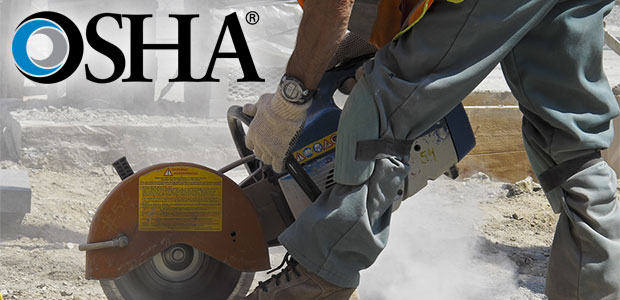
Final Silica Standard Expected in 2016
OSHA Assistant Secretary Dr. David Michaels said work on the proposed crystalline silica standard is "actually moving quite well" and he expects it to be finalized in 2016.
ORLANDO -- OSHA Assistant Secretary Dr. David Michaels told attendees at Safety 2014's June 10 plenary session that work on the agency's proposed crystalline silica standard is "actually moving quite well" and he expects the standard to be finalized in 2016. In a joint appearance with NIOSH Director Dr. John Howard, Michaels provided an update on several regulatory actions, the construction fall prevention stand-down a week earlier, and OSHA's initiatives to protect temporary workers.
"The fastest-growing sector in the economy is temporary workers.... Every month, the largest sector in growth is temporary work," he said. Michaels showed photographs of a temporary worker who died on his first day at a new job and of the machine in which he was injured, a machine that had not been locked out as required, said Michaels, who said OSHA has fined that employer $192,000. "So our message is, do the right thing now," he said. "Obviously, we'll come in and fine you if you don't."
Michaels said OSHA soon will issue a request for information about updating its Permissible Exposure Limits (PELs) and wants to launch a national discussion on how to better protect workers from chemical exposures.
Howard focused his remarks on the Rana Plaza disaster in 2013, when a building's collapse killed 1,137 workers. He asked the assembled OSH professionals in the audience how workplace safety can be sustainably achieved for garment workers across global supply chains; one way he suggested is that companies should report how well they protect their own employees and all employees in their supply chains when they report their financial results. Howard noted that ASSE was founded a century ago in response to another disaster in the garment industry -- the Triangle Shirtwaist fire -- and suggested Rana Plaza should galvanize the safety profession to address the industry's problems again. Because safety metrics are not included in worldwide sustainability indices, "the voice of safety is not being heard as loudly as it should be in the new era of globally extended supply chains," Howard said.
NIOSH recently relaunched its Prevention through Design (PtD) initiative, Howard said, prompting moderator Thomas Kramer, P.E., CSP, to observe that PtD will soon be required by law in Singapore and to ask Howard whether the same thing could be done in the United States. "A law, no, but we'd certainly like to make it a value that employers consider before they purchase," Howard answered.
Both leaders discussed the challenges posed by major changes in the composition of the U.S. workforce -- the growing ranks of temporary workers, with contract workers and subcontractors widely used in many industries -- which Michaels called "the fissuring of the workforce." It has broad implications for enforcement, regulations, and even compliance assistance, he said.